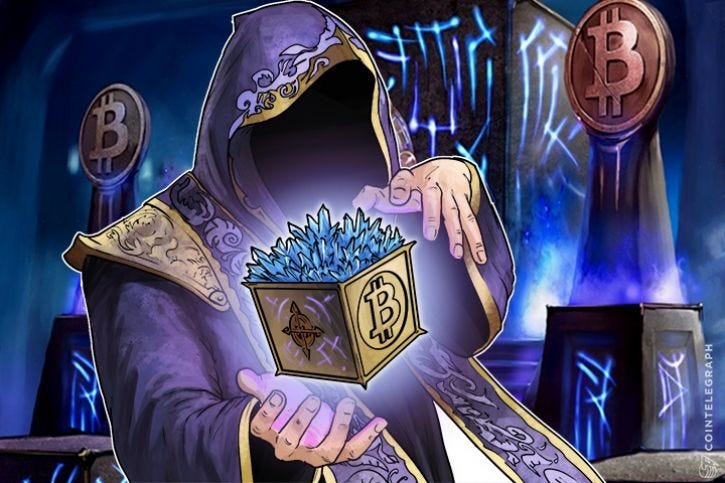Latest news about Bitcoin and all cryptocurrencies. Your daily crypto news habit.

How the Blockchain Eliminates Fraud in Gaming
The gaming industry is going through a period of exponential growth and is expected to be worth over $230 billion by 2022. There are approximately 2.2 billion gamers in the world and as much as one billion of them spend their hard earned money on in-game purchases.
With so much money flowing into various gaming platforms, it has certainly attracted the attention of bad actors. However, if you pay attention to mainstream media, you will only hear about major data breaches like the one that targeted the Sony PlayStation Network last year.
In reality, the gaming industry has been plagued by fraud for years with smaller insidious forms of attacks. According to Into the Web of Profit, a landmark research study conducted by Dr. Mike McGuire, cybercriminals have been investing a lot of time converting stolen virtual goods into cryptocurrencies.
This has made games like FIFA, Final Fantasy, GTA 5, and Star Wars Online popular targets as they enable trading of virtual items while allowing covert conversations. However, while console-based games are still the most popular, the mobile gaming market is also rapidly growing into a target with over 80% of app store revenue being generated by games.
These mobile games often follow a freemium revenue model where money is only generated through in-app purchases. This means that players are willing to spend an average of $50 per game to boost gameplay, acquire virtual items, increase their status.
This has created a thriving underground gray marketplace where stolen virtual items, currencies, user credentials, and even cheat sheets are bought and sold. This means that games are hacked and manipulated to pull this off!
How do they do it? Let’s dive right in and take a look.
Fraudulent Ads and Phishing Attacks
This old-school technique still works and people still fall for them. In a rush to gain an advantage within the game, players still get easily lured into giving up their user credentials after seeing an ad.
Sometimes players are also fooled into clicking a phishing link to a game developer’s website. This usually results in players giving up their credential which can quickly result in major losses of in-game assets and currency.
Glitching
Glitching is a technique used by bad actors to create a situation within a game where the players are fooled into believing that there’s a glitch in the system. This results in the player buying the same virtual item over and over again.
If you check out online gaming forums, you’ll quickly realize that this fraud is running rampant in the industry. Unfortunately, sometimes it’s the players themselves that open themselves up by taking the bait.
Gold Farming
Gold farming is a technique that leverages bot technology to repeatedly perform in-game actions to exploit in-game promotions, earn digital currencies, and win prizes like virtual assets.
Again, if you just swing by most gaming forums, you can see how difficult it can be to tackle this problem. All these virtual assets often end up being sold in underground gray markets.
Remote Access Trojans
A remote access trojan is basically a malware that’s designed to steal players’ credentials and in-game assets while the player is actively logged in and playing. Again, these virtual goods fetch a lot of money in underground markets.
Sybil Attacks
Of all the fraudulent techniques employed by bad actors, Sybil attacks are probably the most popular. This type of attacks focuses on assuming multiple fake identities to trick the system by simulating a presence in multiple geographic locations.
When a Sybil attack is successful, it leads to a variety of malicious activities that include gold farming. By using proxy servers, bad actors can take advantage of in-game regional promotions, rare limited items, and virtual currency arbitrage.
Why is all this happening?
One of the reasons why fraud is rife within the gaming industry is because there are very limited methods to verify in-app purchases. What we really have at the moment are supervised learning models and rules-based systems which can only react to known attack patterns.
Why does this all matter?
With skins trading worth hundreds of millions of dollars annually, it’s now critical to resolving this problem to not only save users from losing money but also to ensure that they continue to enjoy an enhanced gaming experience.
So what’s the solution?
The most robust and resilient solution to this problem is the blockchain!
The blockchain’s highly transparent and decentralized nature makes it impossible to commit fraud when it comes to trading virtual items. You also don’t have to trade in a gray market populated by bad actors because DMarket offers a secure place to engage in in-game trading.
What’s even better is that DMarket connects multiple game universes to safely trade virtual goods between games. Add that with blockchain smart contracts, trades can occur with just one-click while players are actively playing the game.
It also provides an additional benefit for game developers as they can now breath life into their old games by connecting to DMarket’s network and tap into this rapidly growing global economy that’s highly secure and safe.
How the Blockchain Eliminates Fraud in Gaming was originally published in Hacker Noon on Medium, where people are continuing the conversation by highlighting and responding to this story.
Disclaimer
The views and opinions expressed in this article are solely those of the authors and do not reflect the views of Bitcoin Insider. Every investment and trading move involves risk - this is especially true for cryptocurrencies given their volatility. We strongly advise our readers to conduct their own research when making a decision.